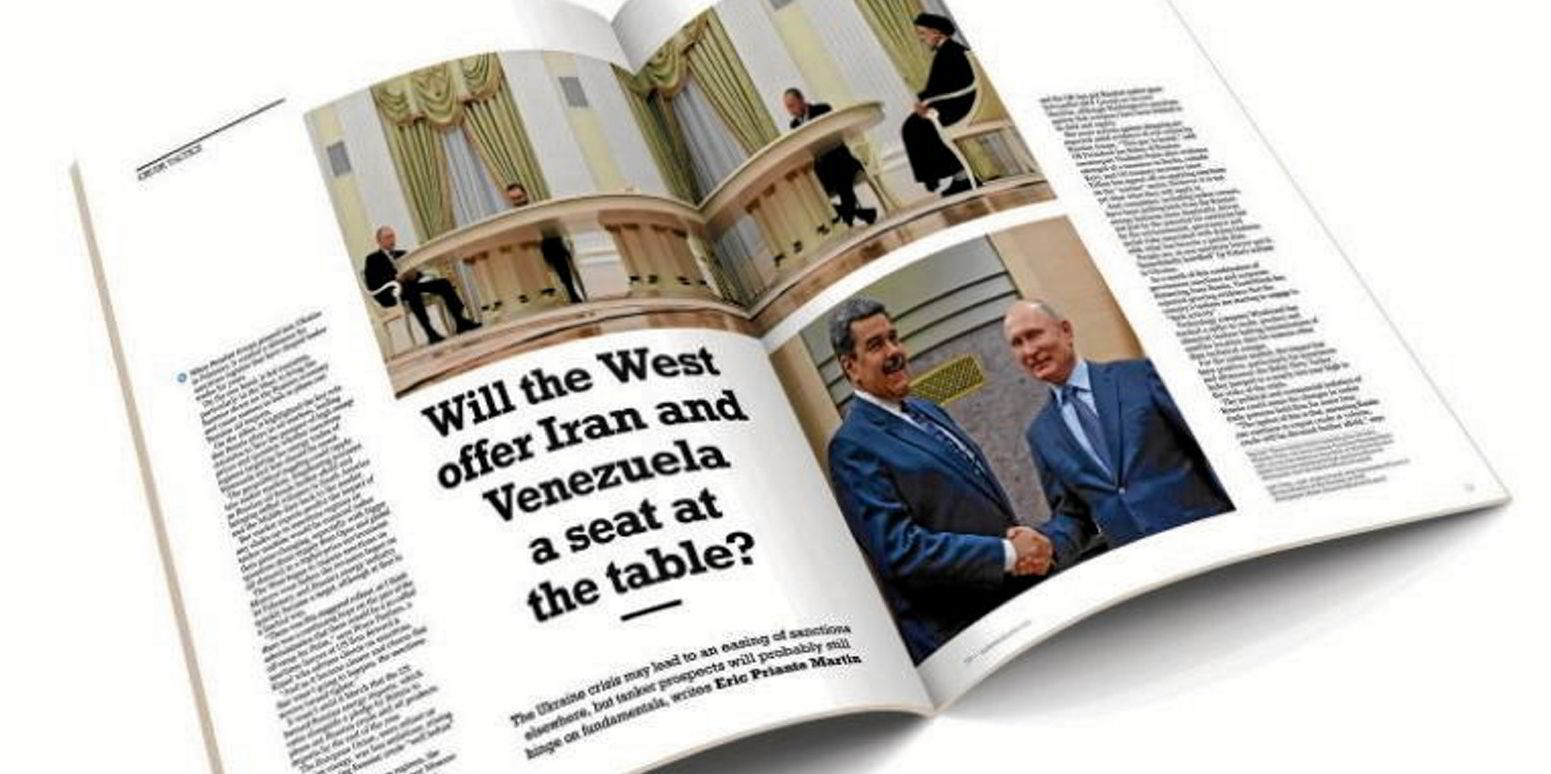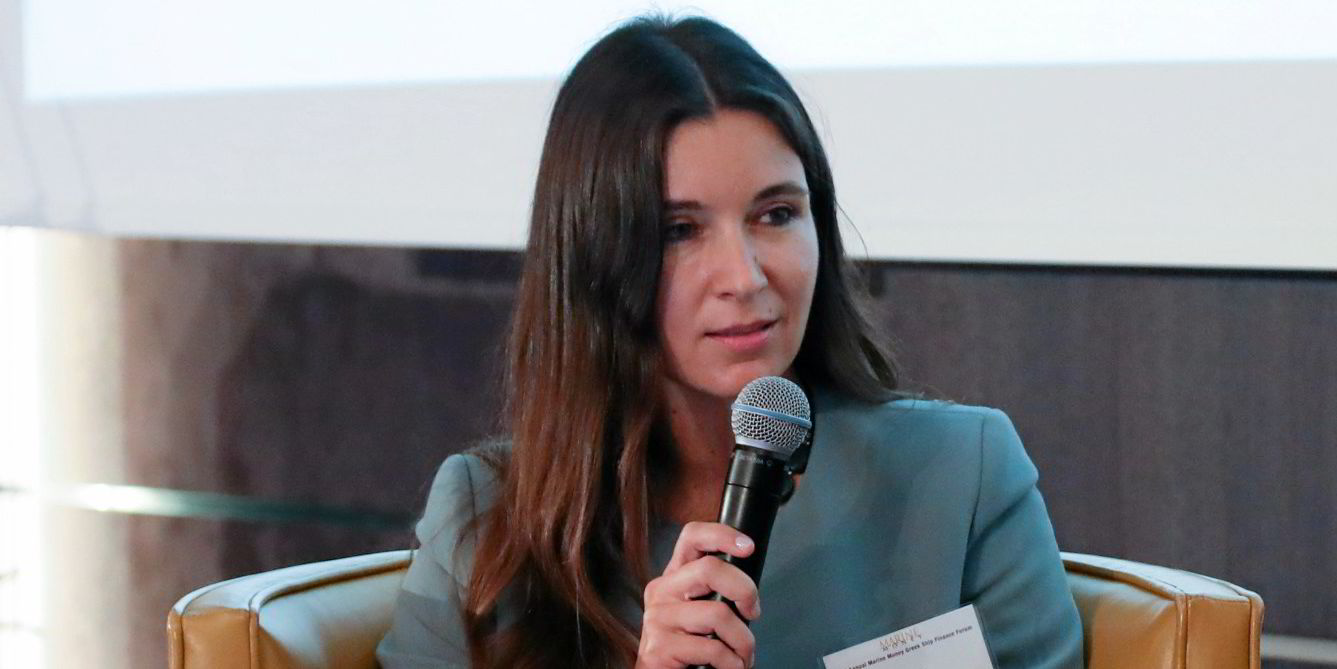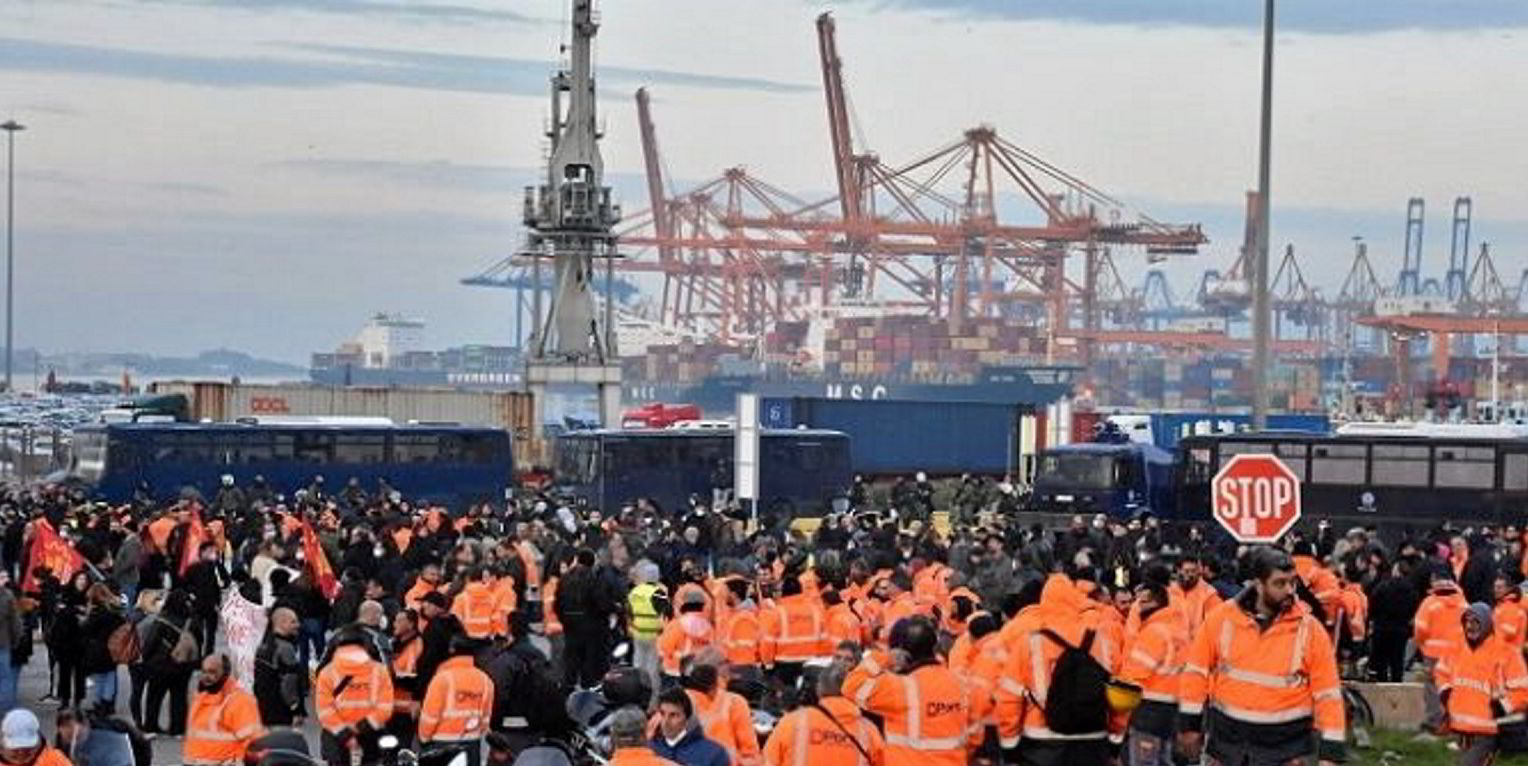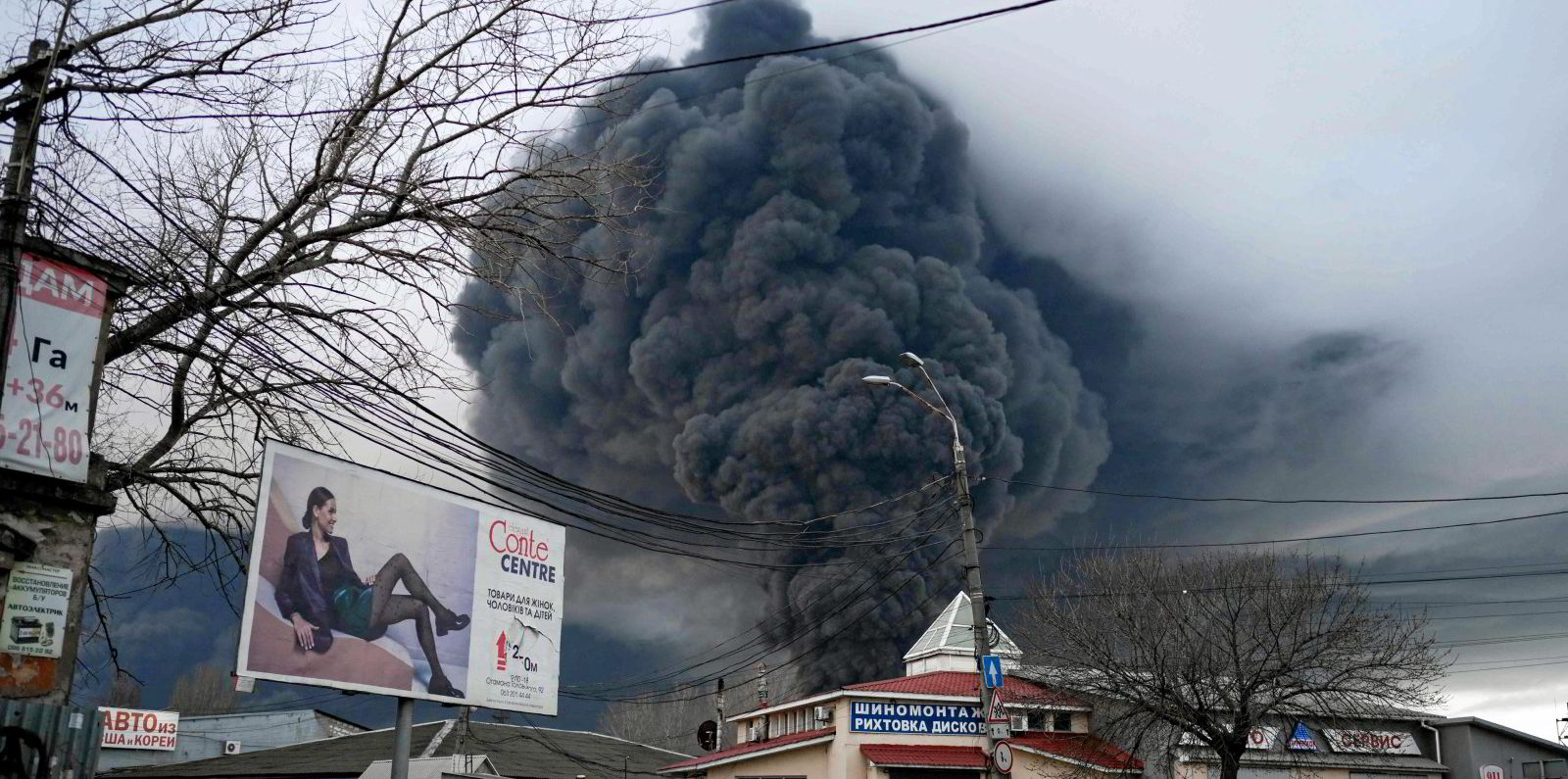Shipowners wonder how the global inflation surge will affect their business.
The rest of the world, however, sees things the other way around — it worries about how shipping players make life expensive for everyone else.
With charter rates for container ships soaring, mainstream media have begun paying attention to the nuts and bolts of the maritime network.

This story is part of a series in TW+ magazine on the wide-ranging impacts of the Russia-Ukraine conflict on shipping. Read the full stories when the magazine is published on 20 May.
Ship queues and supply chains, once a subject of dreary analyst reports, are suddenly becoming hot news for major network TV shows.
Even researchers at the International Monetary Fund (IMF) descended from their ivory tower to look into the matter. After crunching numbers from 143 countries, they conclude that every time freight rates double, global inflation picks up by about 0.7 percentage points.
As shipping costs increase at an even faster clip than last year, the IMF forecasts that the cost of moving containers will boost inflation by about 1.5% in 2022.
That may contribute less to inflation than rising fuel and food prices. Shipping costs, however, are just as painful, the researchers say, because of some characteristics that economists, politicians and businesses find particularly annoying.
First, shipping costs are much more volatile, making them hard to predict and adjust to.
Second, they feed through to producer prices very quickly, within just two months.

Third, they tend to hit harder in poor, land-locked or remote island states, which typically import a relatively larger share of the products, commodities and goods they need.
Small wonder, then, that regulatory pressure is mounting.
On 21 March, the US Federal Maritime Commission (FMC) announced that it was expanding a probe into liner operators and their practices.
“The FMC’s expanded ocean carrier audit programme will provide better visibility into which ocean carriers work well with US exporters, and more importantly, which ocean carriers can and should do more to support exporters,” chairman Daniel Maffei said.
A month earlier, small shippers in the European Union urged regulators to take action, complaining that oligopolistic liner companies are boosting inflation rates and use their financial strength to drive freight forwarders out of business.
The war in Ukraine has made things even worse since, with soaring prices for natural gas and oil sending policymakers squirming for quick fixes.
Even countries highly sympathetic to shipping interests, such as Greece, are toying with ideas to cap prices in the industry.
On 9 March, Greek Prime Minister Kyriakos Mitsotakis urged his EU counterparts to consider putting a ceiling on LNG seaborne transport rates as part of wide-ranging market controls to curb soaring energy costs.
Maintenance and dry-dockings are getting more expensive. As commodity prices soar, yards are charging more for steel renewals. This could be a drain on owners with older vessels that require more extensive repairs. “Everything is getting dearer, from paints to lubricants,” one ship manager moans.
Ports and channels react to higher input prices by raising dues. The Suez Canal increased passage fees twice between November and February.
Politics, however, is just one part of the equation. Traditional ship management is getting trickier as well.
Whether caused by Covid or Ukraine, inflation is already driving all types of costs higher, from bunkers and crewing to maintenance and finance costs.
“Earlier in the year, there was a general expectation that inflationary pressures will settle down quickly. However, it seems that this is not the case and that we need to adapt to a high-inflation era,” says Loukas Barmparis, president of Safe Bulkers.
The most immediate cause of concern is bunkers.
With Russia covering one-fifth of global supply for high-sulphur and low-sulphur fuel and marine gasoil, their prices are “anticipated to remain elevated for the foreseeable future”, tanker owner Euronav said on 31 March, a week before announcing a merger plan with rival Frontline.
Cost synergies were one of the reasons the two companies put forward for their proposed combination.
Exchanging Ukrainian crews alone could increase expenses by up to $500,000 per year, as war reduces seafarer availability and complicates their repatriation, Euronav said.

A scramble to replace them with crews from elsewhere, mainly the Philippines, is already sending crewing costs higher, says Panos Zalachoris of Status Maritime, a major Greece-based crewing agent.
Even regular crew travel is getting dearer. “Plane tickets are two to three times more expensive than they used to be,” Barmparis tells TW+.
Rising prices affect balance sheets in other ways as well.
Chief financial officers have been treated to ultra-low interest rates. As central banks raise interest rates to bring inflation under control, however, finance costs rise with them.
With the vast majority of shipping loans linked to the Libor benchmark interest rate, over-leveraged companies will feel debt repayments weighing heavier.
As long as earnings remain robust, shipping companies should be able to shrug off rising costs. That applies particularly to container ships and broadly for bulkers.
“Our management doesn’t consider inflation to be a significant risk to direct expenses in the current and foreseeable economic environment,” Navios Maritime Partners, a US-listed behemoth with more than 100 ships, stated in its annual 20-F filing in April.

When talking about inflation, shipping executives are not focusing on costs but are mostly concerned about the impact it might have on consumption, economic activity and seaborne trade.
“Central banks are raising interest rates ... oil and gas prices are skyrocketing and a new outbreak of Covid is lurking in China — I can’t imagine a more difficult environment to give a quarterly guidance, but let me try,” Niels Stolt-Nielsen, chief executive of tanker company Stolt-Nielsen, said in March.
Some people are even bullish. Managers of Tufton Ocean Assets says shipping tends to perform well in periods of inflation.
That can be particularly true for owners focusing on asset plays. The industry might also benefit from financial investors seeking to enter the business as they channel some of their funds into hard assets.
“We won’t be surprised to see ... hungry buyers in the next quarter as well, especially as inflation remains high and tangible asset investments continue to make a lot of sense,” Eva Tzima, head of research at Seaborne Shipbrokers, wrote in April.
Inflationary upheaval may also lead to more port congestion, boosting shipping earnings even further.
As inflation in Greece hit a 25-year high, workers at the container terminal of Piraeus went on strike in February to press their employer, China’s Cosco group, for higher wages. On 14 April, the workers were back.
“With inflation running at full speed every month, the wage increases proposed by management cover just a fraction of the price increases for fuel, bread and electricity,” one of their unions said.





